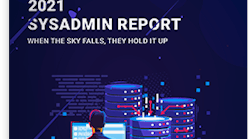Strategies for secure integration of advanced automated systems
With the increasing use of automated systems comes a greater risk of outside threats interfering with critical operations. Digitization engenders the threat that systems can be compromised, and new standards for physical and cyber-security will be necessary to ensure bad actors do not hinder businesses.
But for companies trying to maintain their bottom line, implementing these security measures can seem daunting.
Balancing the need for security in robotic systems with the constraints of a budget can be a challenge. Yet, it is possible to strike a successful balance between cost-effectiveness and full-spectrum protection. The key is the deliberate integration of secure communication networks, which inherently possess strong security measures.
Combining this with a focus on hardwired and wireless security, as well as physical security precautions, can result in substantial cost savings without compromising the safety of sensitive data, personnel, assets and infrastructure.
The Foundation: Robust Infrastructure
The bedrock of secure robotic operations is a dependable infrastructure. Dependable infrastructure encompasses stable connectivity, computational power and networking capabilities, which are critical for successfully implementing security measures.
Among these measures, encryption technology is vital for safeguarding against unauthorized network breaches or signal interference.
Moreover, advanced security practices like regular system diagnostics can considerably reduce the risk of unauthorized access to databases and web-enabled resources. Sophisticated software that alerts system administrators of unknown devices or potential network breaches further bolsters the security framework, keeping those in charge in control and informed of any looming threats.
To be more specific, you need to ensure your network is capable of encrypting device IP addresses as well as the data stream. These measures are necessary to prevent man-in-the-middle attacks and packet captures.
Locally run network management applications are preferable. Companies should regularly run diagnostics checks to identify vulnerabilities, and systems will help prevent bad actors from accessing internal databases and internet-capable assets.
There is no magic bullet to ensure a secure network, but strategic planning will deter most attempts to breach a system. Plug all holes and be vigilant at installing firmware updates, when released, for all networking hardware, both wired and wireless.
Empowering Employees with Cybersecurity Knowledge
An underrated but cost-effective strategy for strengthening defense against cyber threats is fostering cybersecurity awareness among employees.
Despite advanced technology solutions, human error can often be a loophole in the security chain. Therefore, equipping employees with knowledge about best practices for maintaining system security is crucial.
Employee empowerment encompasses strong password creation, understanding the role of additional authentication factors, recognizing phishing threats and adhering to correct protocols when handling or accessing sensitive information.
Organizations can significantly diminish the risk of cyber attacks by promoting a culture of cybersecurity consciousness and the reporting of potential security breaches. Managing staff to recurrent and mandatory online certification will hardwire understanding.
Furthermore, training should incorporate the link between cyber and physical security threats. From cameras to visitor management systems, physical security devices and the data they provide become part of the cybersecurity equation.
Training people to react to noticeable theft or intentional system disruptions can help resolve the issue faster and with little detriment to operations while enriching the captured information for further analysis aimed at prevention.
Specific employees should be tasked with greater responsibility for personnel management and security to ensure that when physical threats arise, they are on hand to respond.
Emphasizing Regular Audits and Updates
Regular audits of current security measures are an effective means to detect and rectify potential weak points before bad actors strike. These audits must be holistic, scrutinizing every system element -- including hardware, network infrastructure, firewall and antivirus systems, and software vulnerabilities.
Updating systems and software is crucial as cyber threats evolve. Regular updates can fix known vulnerabilities and enhance the system’s performance and stability. Practicing regular audits will also keep businesses informed of improvements to available cybersecurity measures and help ensure that you are always using the most up-to-date countermeasures.
Auditing security measures extend to physical security measures as well. In the case of security camera systems, integrating measures such as intelligent software that can monitor the functionality and effectiveness of security cameras can be a cost-effective alternative to physical camera maintenance, where employees must spend time ensuring every camera is properly working.
Prioritizing Investment in Secure Networks
Allocating resources toward a secure network infrastructure is a crucial strategy for safeguarding robotic operations. This includes utilizing encrypted connections, Virtual Private Networks (VPNs), and other security protocols to protect transmitted data from being intercepted or manipulated.
Investing in detection and prevention systems for network intrusions is also beneficial. These systems proactively monitor the network for breaches and promptly notify the relevant personnel or counteract the threat.
Eliminating unused publicly accessible ethernet ports and ensuring that employees correctly use network security protocols are additional ways that networks can remain secure and work in a company’s favor. Most criminals are opportunistic. Even small measures can have a significant impact on preventing a breach.
Working with Trustworthy Vendors
Aligning with trusted vendors can significantly boost the security of robotic, physical, and digital operations.
These vendors, such as Rajant Corporation, have a solid history of delivering secure solutions and providing continuous support and updates for a system’s safety. For example, having provided 20 years of network solutions to the military, Rajant has developed next-generation cryptographic solutions to support the security requirements of an array of mission-critical applications, including those used for DoD’s most sensitive secure communications systems.
The digitalization of industrial operations presents new security challenges. However, businesses can effectively overcome those risks with the right strategies and the proper amount of pragmatism.
To summarize, companies can ensure secure operations at a reasonable cost by investing in a robust infrastructure, employee education, regular audits and updates, secure networks, and partnering with reliable vendors.
About the Author: Alice DiSanto is the Vice President of Global Marketing at the Rajant Corp. Her public and media relations efforts, as well as her work with Rajant’s sales team, staff, strategic partners, and channel, focused on business development with a prioritization on voice-of-customer insights. DiSanto is the current chair of the Security Industry Association (SIA)’s Women in Security Forum (WISF), a community whose mission is to engage all security professionals to promote, recruit, and cultivate the leadership of women. DiSanto is a founding member of the SIA’s WISF Steering Committee and chair of the forum’s PropelHer subcommittee, responsible for SIA WISF’s feeder program of collegiate and professional female athletes into the security industry.






